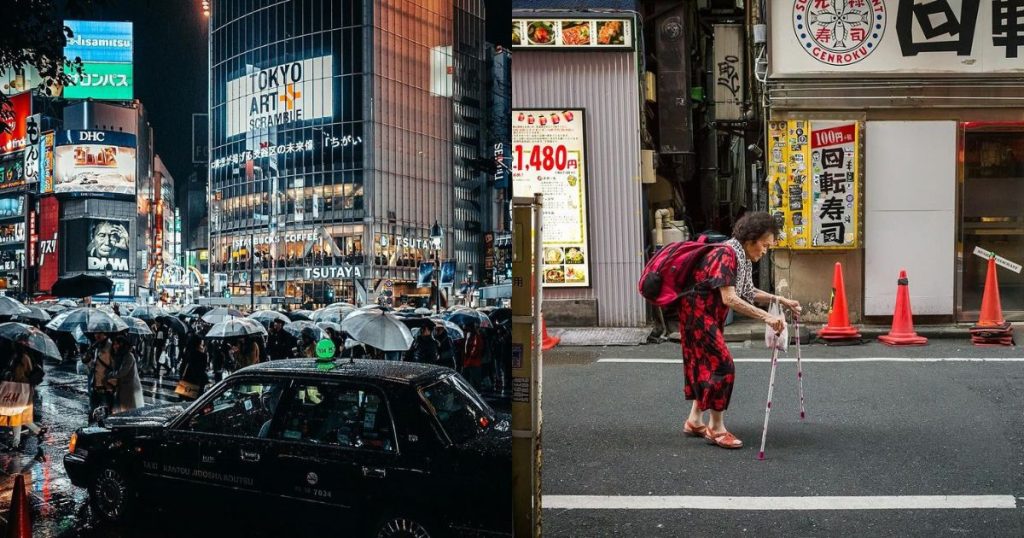Tokyo Ranks 6th Among the World’s Most Walkable Cities
Tokyo has been ranked as the 6th most walkable city in the world, according to a recent study. The study analyzed various factors, including the number of walking trails, rainfall, safety, public transport systems, and biking options, to determine the most pedestrian-friendly cities globally.

Key factors contributing to Tokyo’s ranking as the 6th most walkable city in the world:
| Factor | Tokyo’s Performance |
|---|---|
| Public Transportation | Extensive and efficient network of trains and buses |
| Safety | Low crime rates and overall sense of security |
| Walking Trails | Numerous well-maintained paths and sidewalks |
| Bike Infrastructure | Decent infrastructure, with ongoing efforts to improve facilities |
| Average Monthly Rainfall | Relatively high, but mitigated by well-designed infrastructure |
| Car-Free Places | Not mentioned in the original article |
| Access to Services | Walking trails connect residential areas to commercial districts |
Tokyo’s impressive ranking can be attributed to several factors that make it an ideal city for walking. One of the most notable aspects is the city’s extensive and efficient public transportation system.
Tokyo boasts a vast network of trains and buses that connect every corner of the city, making it easy for residents and tourists to navigate without relying on personal vehicles. The study highlights the importance of public transport as a crucial alternative for those who don’t have access to a car.
In addition to its public transport, Tokyo also scored well in terms of safety. The city is known for its low crime rates and overall sense of security, making it a comfortable place to explore on foot. This safety factor is particularly important for encouraging people to choose walking as their primary mode of transportation.
Another factor contributing to Tokyo’s walkability is the abundance of walking trails. The city offers numerous well-maintained paths and sidewalks that allow pedestrians to enjoy the urban landscape while getting some exercise.
These trails often connect residential areas with commercial districts, parks, and other points of interest, making it convenient for people to walk to their destinations.
While Tokyo may not have scored as high as some European cities in terms of the number of bike trails, it still provides a decent infrastructure for cyclists. The city has been making efforts to improve its biking facilities, recognizing the importance of alternative transportation options.
One aspect where Tokyo may fall short compared to other top-ranking walkable cities is the average monthly rainfall. The city experiences a relatively high amount of precipitation, which could potentially discourage people from walking during certain times of the year.
However, Tokyo’s well-designed infrastructure, including covered walkways and underground passages, helps mitigate the impact of rain on pedestrians.
Here is a table of the top 10 most walkable cities in the world:
| Rank | City | Country |
|---|---|---|
| 1 | Munich | Germany |
| 2 | Milan | Italy |
| 3 | Warsaw | Poland |
| 4 | Helsinki | Finland |
| 5 | Paris | France |
| 6 | Tokyo | Japan |
| 7 | Madrid | Spain |
| 8 | Oslo | Norway |
| 9 | Copenhagen | Denmark |
| 10 | Amsterdam | Netherlands |
Some additional information about these cities:
- Amsterdam ranks 3rd for the total distance of bike trails (1,090,608 km)
- Copenhagen has the 2nd highest public transport score and ranks 9th for safety
- Other cities with high-quality public transport include Zurich (1st) and Stockholm (3rd)
- Madrid has the least average monthly rainfall (34.6 mm) among the top 10 cities
It’s worth noting that Tokyo is the only non-European city to make it into the top 10 list of most walkable cities. This achievement is a testament to the city’s commitment to creating a pedestrian-friendly environment and promoting sustainable transportation options.
The study’s findings highlight the importance of walkability in urban planning and development. Cities that prioritize pedestrian infrastructure, public transportation, and safety measures are more likely to create livable and sustainable communities.
Tokyo’s 6th place ranking serves as an example for other cities around the world, demonstrating the benefits of investing in walkability.
As cities continue to grow and evolve, it is crucial to consider the needs of pedestrians and promote walking as a viable and attractive mode of transportation. Tokyo’s success in this regard can inspire other cities to follow suit and create more walkable environments for their residents and visitors alike.